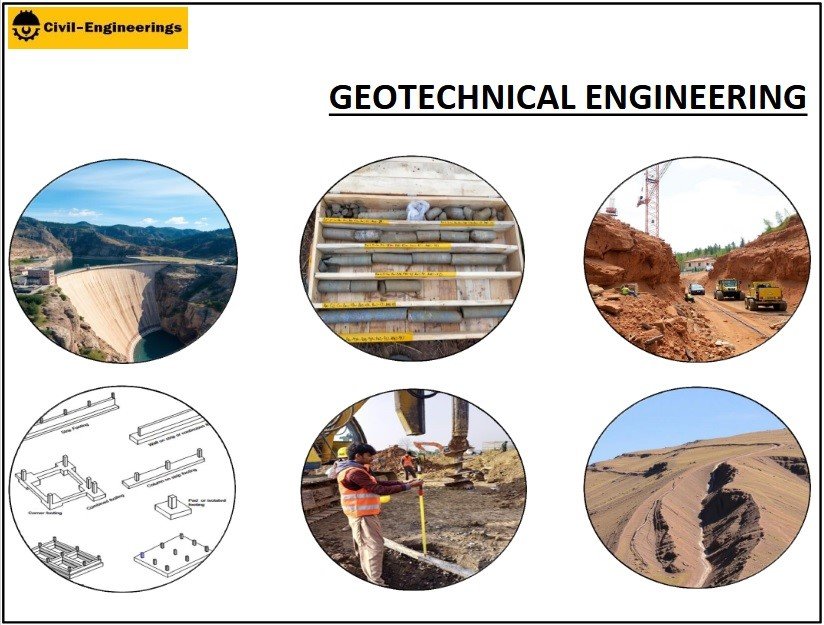Not known Incorrect Statements About Geotechnical Engineering For Construction Projects
Geotechnical Engineering For Construction Projects Things To Know Before You Get This
Table of Contents5 Easy Facts About Geotechnical Engineering For Construction Projects ShownHow Geotechnical Engineering For Construction Projects can Save You Time, Stress, and Money.Some Ideas on Geotechnical Engineering For Construction Projects You Need To KnowGeotechnical Engineering For Construction Projects - The FactsThe Only Guide for Geotechnical Engineering For Construction ProjectsThe Best Strategy To Use For Geotechnical Engineering For Construction Projects
These functions should be examined by geotechnical designers to anticipate their movements under numerous scenarios., making this analysis essential.A geotechnical designer will analyze soil to establish the bearing capability of the earth and advise appropriate structure types, such as superficial foundations, deep foundations like heaps, or specialized solutions like drifting structures for soft dirts. Understanding the functions and activities of soil and rock, in enhancement to exactly how they communicate with building and constructions that have actually been erected on or within them, is just one of the key descriptions for why geotechnical engineering is essential.
Ecological protection is achieved with geotechnical engineering. Experience in air, water, and dirt quality maintenance is put to use by geotechnical engineers to decrease the negative effects of projects.
To sum up, geotechnical engineering is a crucial discipline that preserves the resilience and honesty of civil framework. Geotechnical engineers contribute to making structure jobs effective all over the globe by recognizing the practices of earth products and applying appropriate preparation techniques.
About Geotechnical Engineering For Construction Projects
By examining soil, rock, and subsurface problems, geotechnical engineers supply important insights that help in the layout, building, and maintenance of structures and framework.

The Ultimate Guide To Geotechnical Engineering For Construction Projects
Lab testing: Figuring out the residential or commercial properties of dirt and rock. Area testing: Performing examinations on-site to assess conditions. Analysis and style: Making use of information to develop structures, retaining wall surfaces, passages, and various other frameworks. A number of prominent construction tasks have successfully utilized geotechnical design to guarantee their security and security. :: The globe's tallest building called for a deep understanding of the underlying geology.

As a leader in geotechnical design, BECC Inc. is devoted to delivering cutting-edge and efficient options that satisfy the highest standards of high quality and security. For more details on just how BECC Inc. can support your following building and construction task, contact us today and allow us aid you improve solid ground.
William Rankine, a designer and physicist, created a different to Coulomb's earth pressure concept. Albert Atterberg developed the clay uniformity indices that are still made use of today for soil category. In 1885, Osborne Reynolds look at this web-site acknowledged that my explanation shearing causes volumetric extension of dense products and contraction of loosened granular materials. Modern geotechnical design is stated to have started in 1925 with the publication of Erdbaumechanik by Karl von Terzaghi, a mechanical engineer and geologist.
Getting My Geotechnical Engineering For Construction Projects To Work
Terzaghi likewise established the structure for concepts of bearing ability of structures, and the concept for prediction of the rate of settlement of clay layers as a result of debt consolidation. After that, Maurice Biot totally created the three-dimensional dirt consolidation concept, prolonging the one-dimensional design formerly developed by Terzaghi to a lot more general hypotheses and presenting the collection of standard equations of Poroelasticity.
Geotechnical designers check out and figure out the buildings of subsurface problems and products. They likewise design corresponding earthworks and retaining structures, tunnels, and structure foundations, and may monitor and assess sites, which may even more involve website monitoring as well as the threat analysis and reduction of all-natural dangers - Geotechnical Engineering for Construction Projects. Geotechnical engineers and engineering rock hounds execute geotechnical investigations to acquire information on the physical residential properties of dirt and rock underlying and adjacent to a website to develop earthworks and foundations for recommended structures and for the fixing of distress to earthworks and structures caused by subsurface problems.
The Best Guide To Geotechnical Engineering For Construction Projects
Still, they are navigate to this website often utilized to allow a geologist or designer to be decreased into the borehole for direct visual and hands-on exam of the dirt and rock stratigraphy. Numerous dirt samplers exist to satisfy the requirements of various design tasks. The basic infiltration examination, which utilizes a thick-walled split spoon sampler, is the most typical way to collect disrupted samples.

If the user interface in between the mass and the base of a slope has a complicated geometry, slope security analysis is difficult and mathematical remedy techniques are required. Generally, the user interface's specific geometry is unidentified, and a streamlined interface geometry is thought. Limited inclines require three-dimensional versions to be examined, so most inclines are evaluated assuming that they are definitely large and can be represented by two-dimensional versions.
Our Geotechnical Engineering For Construction Projects Ideas
Creating the design based on a working hypothesis of actions prepared for under the most potential problems. Choice of quantities to be observed as building earnings and calculating their anticipated worths based on the functioning theory under the most undesirable conditions.
Measurement of amounts and assessment of actual problems. Style adjustment per actual conditions The empirical approach is ideal for building and construction that has actually already started when an unanticipated development takes place or when a failure or accident looms or has actually currently occurred. It is unsuitable for tasks whose layout can not be changed throughout building and construction.